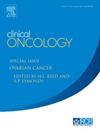消融前促甲状腺球蛋白和促甲状腺激素比值在成人甲状腺乳头状癌放射性碘治疗中的临床作用
IF 3.2
3区 医学
Q2 ONCOLOGY
引用次数: 0
摘要
目的评估消融前促甲状腺球蛋白与促甲状腺激素比值(sTg/TSH)的预测价值,并探讨影响放射性碘(RAI)治疗成人乳头状甲状腺癌(PTC)疗效的其他因素。方法回顾性分析1071例接受甲状腺全切除术后RAI治疗的患者的临床和病理资料。这项研究包括576名这样的患者。根据参与者对RAI治疗的反应分为两组:良好反应组(ER)和无ER组(NER)。使用单变量和多变量二元逻辑回归分析发现了影响NER的因素。通过分析受试者工作特征(ROC)曲线和制定诊断标准,发现sTg和sTg/TSH比值的预测重要性。决策曲线分析(DCA)被用来评估这些发现的实际意义。结果在576例患者中,60.07%(346人)对RAI治疗表现出ER。通过单因素和多因素logistic回归分析确定的NER的独立预测因素包括多病灶性(优势比[OR] = 2.16, 95%可信区间[CI]: 1.28-3.67, P = 0.004),有超过10个阳性淋巴结(PLN) (OR = 3.78, 95% CI: 1.68-8.54, P = 0.001),存在远处转移(OR = 19.22, 95% CI: 2.09-176.93, P = 0.009),受刺激甲状腺球蛋白(sTg)水平升高(OR = 1.04, 95% CI:1.00-1.07, P = 0.025), sTg/TSH比值较高(OR = 2.48, 95% CI: 1.80-3.41, P <;0.001)。受试者工作特征(ROC)曲线分析建立了预测NER的诊断阈值,sTg水平为7.255 ng/ml(曲线下面积[AUC] = 0.893), sTg/TSH比值为0.127 (AUC = 0.889),均具有较强的敏感性和特异性。平滑曲线拟合表明,随着sTg/TSH比值的升高,NER的风险逐渐增加。DCA证实了这些预测因子在预测NER预后方面的实质性临床净收益。结论sTg/TSH比值可作为预测PTC原发性RAI治疗疗效的可靠诊断指标。此外,对于多病灶患者,PLN >10, sTg >7.255 ng/ml, sTg/TSH比值>;0.127,积极的术后随访和监测是必不可少的。本文章由计算机程序翻译,如有差异,请以英文原文为准。
Clinical Role of Pre-ablation Stimulated Thyroglobulin and Thyroid-Stimulating Hormone Ratio for Radioactive Iodine Treatment in Adults with Papillary Thyroid Cancer
Objective
This investigation assesses the predictive utility of the pre-ablation stimulated thyroglobulin to thyroid-stimulating hormone ratio (sTg/TSH) and examines the other factors affecting the efficacy of radioactive iodine (RAI) therapy in adult patients with papillary thyroid cancer (PTC).
Methods
We performed a retrospective review of clinical and pathological data from 1071 patients who received a total thyroidectomy followed by RAI therapy. The study included 576 of these patients. Participants were separated into two groups according to their reaction to RAI therapy: excellent response (ER) and non-ER (NER). The factors that contribute to NER were found using univariate and multivariate binary logistic regression analyses. The predictive importance of the sTg and sTg/TSH ratio was discovered by analyzing receiver operating characteristic (ROC) curves and setting diagnostic criteria. Decision curve analysis (DCA) was used to assess the practical implications of these findings.
Results
Among the 576 patients assessed, 60.07% (346 individuals) demonstrated an ER to RAI treatment. Independent predictors of a NER identified through both univariate and multivariate logistic regression analyses included multifocality (odds ratio [OR] = 2.16, 95% confidence interval [CI]: 1.28–3.67, P = 0.004), having more than ten positive lymph nodes (PLN) (OR = 3.78, 95% CI: 1.68–8.54, P = 0.001), presence of distant metastases (OR = 19.22, 95% CI: 2.09–176.93, P = 0.009), elevated stimulated thyroglobulin (sTg) levels (OR = 1.04, 95% CI: 1.00–1.07, P = 0.025), and a higher sTg/TSH ratio (OR = 2.48, 95% CI: 1.80–3.41, P < 0.001). Receiver operating characteristic (ROC) curve analysis established diagnostic thresholds for predicting NER at an sTg level of 7.255 ng/ml (area under the curve [AUC] = 0.893) and an sTg/TSH ratio of 0.127 (AUC = 0.889), both demonstrating robust sensitivity and specificity. Smooth curve fitting illustrated a progressive increase in the risk of NER with rising levels of the sTg/TSH ratio. DCA confirmed the substantial clinical net benefit of these predictors in forecasting NER outcomes.
Conclusions
The sTg/TSH ratio is confirmed as a reliable diagnostic marker for predicting the response to primary RAI treatment in PTC. Moreover, active postoperative follow-up and surveillance are essential for patients with multifocality, PLN >10, sTg >7.255 ng/ml, and sTg/TSH ratio >0.127.
求助全文
通过发布文献求助,成功后即可免费获取论文全文。
去求助
来源期刊

Clinical oncology
医学-肿瘤学
CiteScore
5.20
自引率
8.80%
发文量
332
审稿时长
40 days
期刊介绍:
Clinical Oncology is an International cancer journal covering all aspects of the clinical management of cancer patients, reflecting a multidisciplinary approach to therapy. Papers, editorials and reviews are published on all types of malignant disease embracing, pathology, diagnosis and treatment, including radiotherapy, chemotherapy, surgery, combined modality treatment and palliative care. Research and review papers covering epidemiology, radiobiology, radiation physics, tumour biology, and immunology are also published, together with letters to the editor, case reports and book reviews.
 求助内容:
求助内容: 应助结果提醒方式:
应助结果提醒方式:


